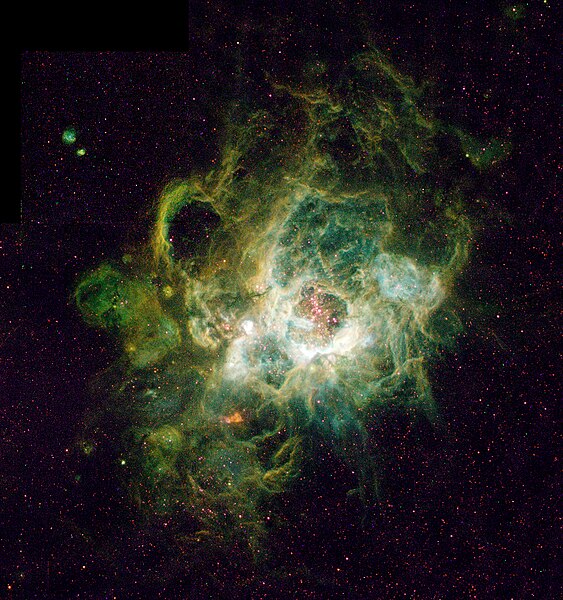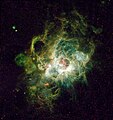Soubor:Nursery of New Stars - GPN-2000-000972.jpg

Velikost tohoto náhledu: 563 × 600 pixelů. Jiná rozlišení: 225 × 240 pixelů | 450 × 480 pixelů | 721 × 768 pixelů | 1 127 × 1 201 pixelů.
Původní soubor (1 127 × 1 201 pixelů, velikost souboru: 2,42 MB, MIME typ: image/jpeg)
Historie souboru
Kliknutím na datum a čas se zobrazí tehdejší verze souboru.
| Datum a čas | Náhled | Rozměry | Uživatel | Komentář | |
|---|---|---|---|---|---|
| současná | 8. 8. 2019, 20:12 |  | 1 127 × 1 201 (2,42 MB) | BevinKacon | Reverted to version as of 01:11, 9 April 2009 (UTC) bad upscale by new user |
| 3. 8. 2019, 15:38 |  | 1 690 × 1 800 (2,84 MB) | Armin3636 | بالا بردن کیفیت | |
| 29. 7. 2019, 14:08 |  | 1 024 × 1 091 (1,21 MB) | Armin3636 | بارگذاری کامل پرونده | |
| 9. 4. 2009, 03:11 |  | 1 127 × 1 201 (2,42 MB) | BotMultichillT | {{Information |Description={{en|1=This is a Hubble Space Telescope image (right) of a vast nebula called NGC 604, which lies in the neighboring spiral galaxy M33, located 2.7 million light-years away in the constellation Triangulum. This is a site where |
Využití souboru
Tento soubor používají následující 3 stránky:
Globální využití souboru
Tento soubor využívají následující wiki:
- Využití na af.wikipedia.org
- Využití na anp.wikipedia.org
- Využití na an.wikipedia.org
- Využití na ar.wikipedia.org
- Využití na arz.wikipedia.org
- Využití na ast.wikipedia.org
- Využití na az.wikipedia.org
- Využití na ba.wikipedia.org
- Využití na be.wikipedia.org
- Využití na bg.wikipedia.org
- Využití na bn.wikipedia.org
- Využití na bs.wikipedia.org
- Využití na ca.wikipedia.org
- Využití na ceb.wikipedia.org
- Využití na ce.wikipedia.org
- Využití na da.wikipedia.org
- Využití na de.wikipedia.org
- Využití na de.wikibooks.org
- Využití na diq.wikipedia.org
- Využití na el.wikipedia.org
- Využití na en.wikipedia.org
Zobrazit další globální využití tohoto souboru.
